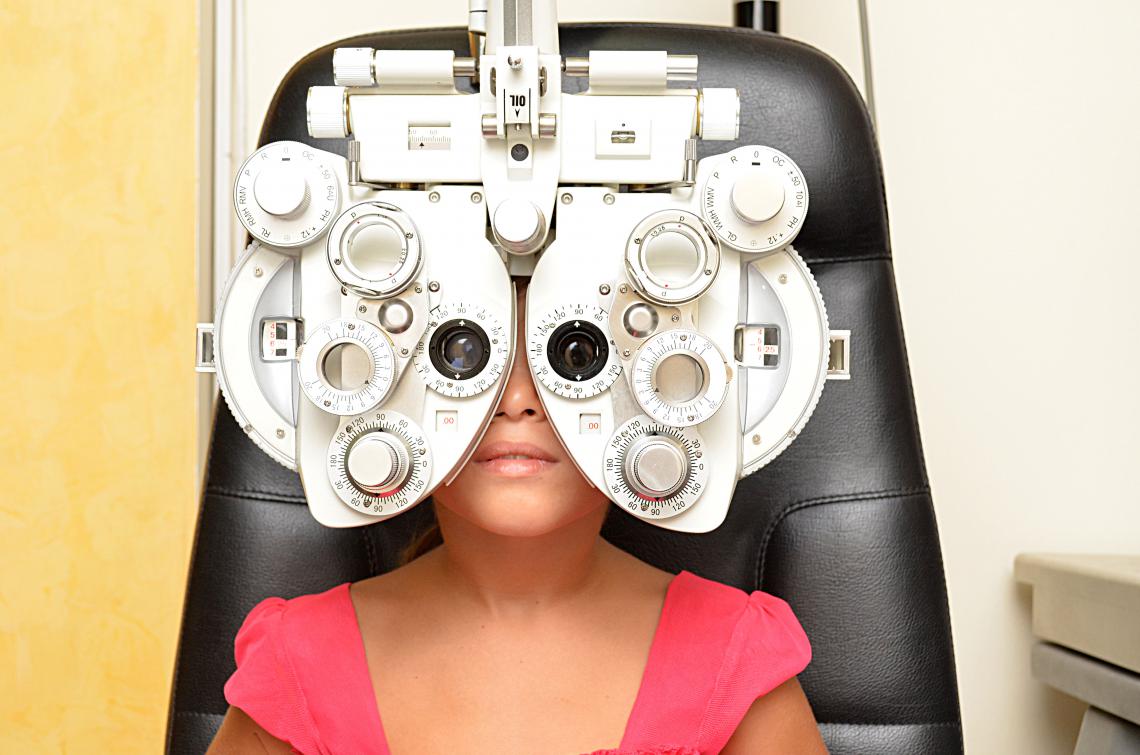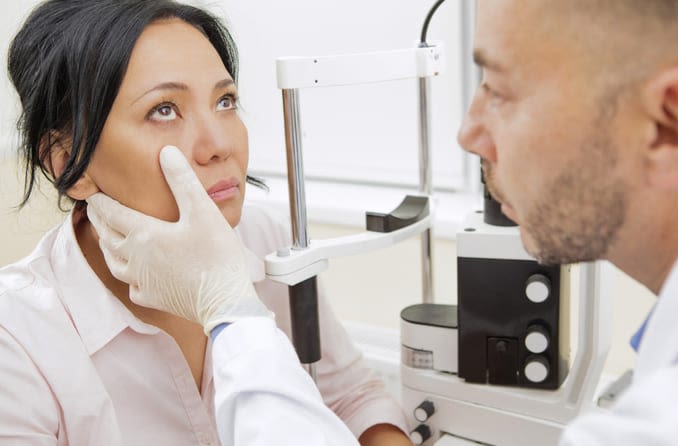Explore Advanced Services at Opticore Optometry for Eye Wellness
Explore Advanced Services at Opticore Optometry for Eye Wellness
Blog Article
Discovering the most up to date Technological Innovations in Optometry and What They Mean for Optometrists
From the accuracy of Optical Comprehensibility Tomography to the nuanced insights supplied by AI-driven diagnostic tools, these innovations are establishing brand-new standards in individual evaluation and therapy. As these advancements permeate the technique, eye doctors are faced with the obstacle of embracing these devices to enhance person end results.
Technologies in Diagnostic Devices
Progressing the field of optometry, innovations in diagnostic tools have changed the method eye care experts evaluate and identify aesthetic disabilities and eye problems. The previous years has actually experienced substantial technological developments, allowing more extensive and exact assessments. Optical Coherence Tomography (OCT), as an example, gives high-resolution cross-sectional images of the retina, enabling the very early discovery of illness such as glaucoma and age-related macular deterioration. This non-invasive imaging technique has become important in modern optometric practice.
Another key advancement is the introduction of sophisticated corneal topography systems, which map the surface curvature of the cornea with accuracy. These devices are particularly beneficial for fitting call lenses and identifying corneal disorders. Additionally, electronic retinal imaging has actually changed standard ophthalmoscopy, offering in-depth, breathtaking sights of the retina that facilitate detailed aesthetic exams.
The advancement of wavefront aberrometry has likewise been critical, making it possible for the analysis of refractive errors with unparalleled accuracy (Opticore Optometry). This modern technology aids in personalizing rehabilitative lenses and enhancing medical outcomes for refractive surgical procedures. Jointly, these diagnostic innovations empower optometrists to supply remarkable individual care, making sure very early treatment and tailored treatment strategies, ultimately boosting aesthetic health and wellness results
AI in Individual Monitoring
Structure on the foundation of advanced analysis devices, the incorporation of expert system (AI) in patient administration stands for a transformative leap for optometry. AI systems are significantly used to enhance performance, precision, and personalization in client treatment. By assessing large quantities of information, AI can recognize patterns and predict prospective eye problems, allowing optometrists to tailor interventions more effectively. This capacity is important in taking care of chronic eye conditions such as glaucoma and diabetic retinopathy, where early discovery and continuous monitoring are key.
In addition, AI-driven systems assist in streamlined client interactions and management processes. Automated organizing, digital consultations, and customized follow-up plans not only boost person fulfillment but likewise optimize time management for specialists. These systems can triage clients based on the seriousness of their conditions, guaranteeing that those in crucial need get punctual focus.
Additionally, AI boosts decision-making by giving eye doctors with evidence-based suggestions and treatment pathways. By integrating data from electronic health records, AI devices supply understandings that inform clinical choices, lowering the danger of errors and boosting client end results. As AI remains to progress, its function in client administration will likely expand, improving the landscape of optometric care.
Advances in Retinal Imaging
In the world of optometry, retinal imaging has actually observed amazing technological innovations that are improving diagnostic capacities and patient treatment. Technologies such as Optical Coherence Tomography (OCT) and fundus photography have actually transformed exactly how eye doctors picture and assess the retina. OCT, in certain, gives high-resolution, cross-sectional images of the retina, permitting for the detailed exam of its layers. This capacity is invaluable for very early detection and management of conditions like glaucoma, diabetic retinopathy, and age-related macular degeneration.
Enhanced imaging modalities like OCT angiography are further refining analysis precision. This non-invasive strategy maps blood circulation in the retina, offering important insights right into vascular wellness without the need for dye shots. In addition, adaptive optics technology is being incorporated right into read the full info here retinal imaging systems to remedy ocular aberrations, supplying unmatched photo quality. Such developments help with the recognition of minute retinal changes that can indicate disease development.
Moreover, developments in fabricated intelligence are boosting retinal imaging by making it possible for automated evaluation of large datasets. These systems assist eye doctors in determining patterns indicative of pathology, thus enhancing diagnostic accuracy and efficiency. Jointly, these advancements are changing retinal imaging into look at this website a keystone of modern eye treatment, improving end results and expanding therapeutic opportunities.
Teleoptometry's Growing Function
Teleoptometry is increasingly becoming an important element of eye treatment, driven by improvements in digital interaction and analysis tools. This is especially advantageous in underserved and country locations where accessibility to specialized eye treatment is usually restricted.
The integration of synthetic intelligence (AI) further enhances teleoptometry, enabling the analysis of visual information and assisting in the discovery of ocular problems such as glaucoma and diabetic person retinopathy. AI-powered formulas can quickly interpret complex imaging information, supplying eye doctors with valuable understandings that reinforce professional decision-making.
In addition, teleoptometry supports connection of care via seamless combination with electronic health and wellness documents (EHRs), enabling eye doctors to maintain comprehensive individual histories. When seeking advice from with different experts., this makes certain that clients obtain consistent and tailored treatment also.
In spite of these advantages, difficulties remain, including ensuring data security and taking care of individual expectations. However, teleoptometry stands for a significant stride towards more accessible, efficient, and patient-centered eye treatment. As innovation advances, its duty is positioned to broaden even more.

Future Patterns in Eye Treatment
A myriad of cutting-edge fads is readied to reshape the future of eye care, driven by technical developments and the developing requirements of individuals. One substantial pattern is the assimilation of expert system (AI) in diagnostics, which promises to boost the precision and additional info effectiveness of eye assessments. AI formulas can analyze huge amounts of information from retinal photos, potentially identifying conditions like diabetic person retinopathy and glaucoma earlier than standard methods.
Moreover, individualized medicine is acquiring grip in optometry, with genetic screening notifying personalized treatment plans. This approach aims to enhance person results by tailoring treatments to specific genetic accounts. Wearable modern technology, such as clever contact lenses, is likewise on the perspective, providing real-time monitoring of intraocular stress or glucose degrees, therefore providing continual insights right into systemic and eye health and wellness.
The adoption of increased truth (AR) and digital truth (VIRTUAL REALITY) in training and client education is one more arising pattern. These modern technologies use immersive experiences that can enhance understanding and abilities both for optometrists and clients. As these fads evolve, optometrists need to stay abreast of technological developments to provide innovative care, guaranteeing enhanced patient end results and complete satisfaction in the dynamic landscape of eye treatment.
Verdict

Collectively, these diagnostic developments empower optometrists to provide exceptional patient treatment, guaranteeing very early intervention and tailored treatment strategies, ultimately improving aesthetic health outcomes.

As these innovations proceed to evolve, eye doctors need to adjust and integrate them right into method, inevitably enhancing process performance and elevating the criterion of eye care delivered to clients.
Report this page